John Young, who walked on the moon as part of the Apollo 16 mission, commanded the first space shuttle mission in 1981 and made four more space flights, passed away at the age of 87
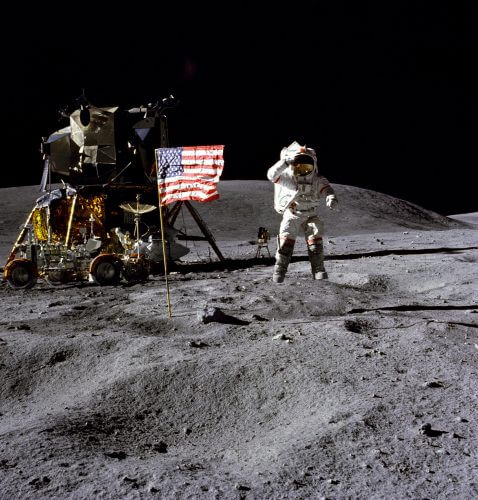
American astronaut John Young died on Friday, January 5, following complications from pneumonia, according to Has announced Yesterday NASA
Young was the ninth person to walk on the moon, during the Apollo 16 mission in 1972. Young had previously flown to the moon once more, without landing on it, on the Apollo 10 mission, and before that had flown twice to low-Earth orbit on the Gemini spacecraft. Young also served as the space shuttle mission commander Columbia, the first flight of the space shuttle program in 1981.
After a second shuttle flight, Young became the first person to make six space flights. He is also the only person to have flown and commanded four different spacecraft (Gemini, the Apollo Command Module, the Lunar Lander and the Space Shuttle). Young retired from NASA in 2004, after a 42-year career during which he completed 835 hours of space flight.
"Today, NASA and the world have lost a trailblazer," said NASA Acting Administrator Robert Lightfoot. In the notice published by the agency. “Astronaut John Young's esteemed career spanned three generations of spaceflight; We will stand on his shoulders as we look toward the next human frontier."
Watch: Yang rampages on the moon in the Lunar Rover
"John was among a group of early space pioneers, whose bravery and commitment enabled our nation's first great achievements in space," Lightfoot added. "But, not content with that, his energetic contributions continued long after his six flights into space - a world record at the time of his retirement from the cockpit."
The beginning of his career as a pilot in the US Navy
Young was born in 1930, and as a child, one of his favorite hobbies was building model airplanes - the first hint of his love for flying and space. In 1952 he completed a bachelor's degree with high honors in aeronautical engineering from the Georgia Institute of Technology.
After completing his studies, he enlisted in the US Navy, and served in the Korean War as a fire control officer aboard a destroyer. In 1953 he began flight training at a naval school, and began serving as a pilot in 1954. For four years he flew on F-9 Cougar and F-8 Crusader fighter jets.
In 1959 he began serving as a test pilot, and tested weapon systems for various aircraft. during this period wrote down Two world records for climb time, 3 km in 34.5 seconds, and 25 km in 227.6 seconds, in an F-4 Phantom fighter plane.
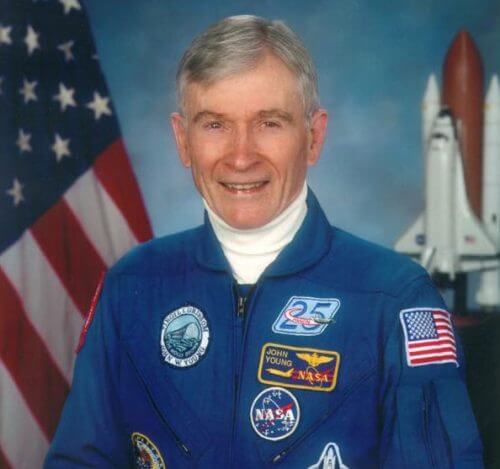
The pilot, astronaut and former administrator of the US space agency, Charles Bolden, said In 2004 that Young, along with astronaut Robert "Hot" Gibson, was the best pilot he had ever met: "I have never met two people like them. Everyone else gets on the plane; John and Hot wore their plane. They are simply amazing."
In 1961, following the speech of US President John F. Kennedy before Congress, where he announced his goal of landing a man on the moon and returning him safely by the end of the decade, Young decided he wanted to join the audacious effort. In September 1962, he was selected for the agency's second group of astronauts, known as the "New Nine" (The New Nine).
First flights and the space sandwich incident
In March 1965, Young flew into space for the first time as co-pilot alongside Gus Grissom (who perished in the disaster Apollo 1 two years later), on a mission Gemini 3, the first manned flight of Gemini spacecraft.
The two-seat Gemini spacecraft replaced the first generation of American spacecraft, Mercury, which could accommodate only one person. The Gemini spacecraft were used to test in orbit around the Earth the techniques that would be required for a mission to the Moon, such as docking in space and extravehicular activity ("space walking").
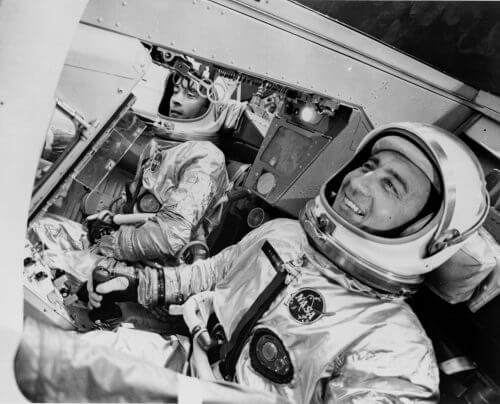
In a mission that lasted 4 hours and 52 minutes, Grissom and Young did not perform a spacewalk or docking, but only tested the basic capabilities of the spacecraft, and also performed the first orbital maneuver for a manned spacecraft, in which they changed the height of the orbit in which it circled the Earth.
Amusing incident Something happened about two hours after launch, when Yang pulled a corned beef sandwich from his space suit pocket. "Where did it come from?", Ask The surprised Grissom. "I brought it with me," replied Yang. "We'll see what the point of it is. Smells, doesn't it?".
Young smuggled the banned sandwich, bought by another astronaut two days earlier, despite fears that crumbs would spread in the weightless environment and pose a risk to her electronics, or get into the pilots' eyes. Indeed, when Grissom bit into the sandwich, he said: “It's falling apart. I'm going to stick it in my pocket." "It was an idea, anyway… not a very good one," Yang replied. "Pretty good, if it would only be kept together," Grissom replied.
Since one of the goals of the mission was to test a special space food for the astronauts, to which a layer of gelatin was added so that it would not crumble, several members of Congress criticized NASA for the sandwich incident, as they saw it as a waste of public money.
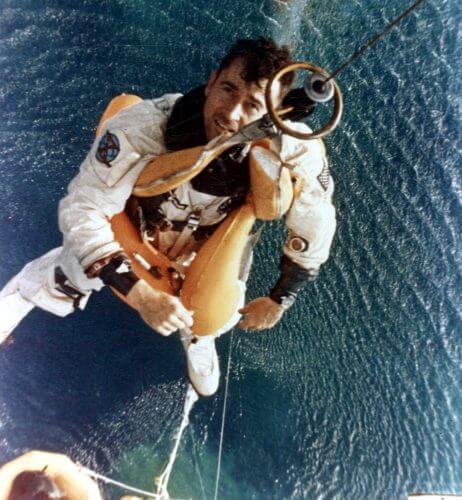
Young was reprimanded by the agency for the prank, but returned to space a year later, in July 1966, as mission commander Gemini 10. During the mission he and his co-pilot, Michael Collins, performed the first double docking in the Gemini program, with two robotic Agena spacecraft.
The flights to the moon - Apollo 10 and 16
In May 1969 Young flew to the moon in a spacecraft Apollo 10, which performed a "dress rehearsal" before the first moon landing of the historic Apollo 11 mission, two months later. While in command of Apollo 10 Tom Stafford and his partner Eugene Cernan They entered the lunar lander and lowered their orbit to a height of only about 15 km above the lunar soil, Young remained in the command module and waited for their return. During the return to Earth, Apollo 10 reached the highest speed ever for any manned vehicle - 39,897 km/h.
Young is one of only three people to have flown to the moon twice, having returned to it in April 1972, on a mission Apollo 16. This time Yang served as mission commander, and landed on the moon together with his partner Charlie Duke.
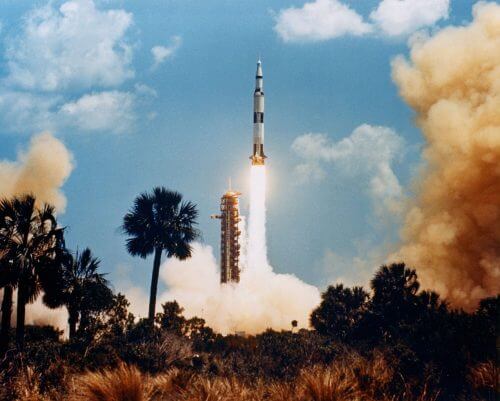
The two stayed on the moon for almost three days (71 hours), and performed three moonwalks in the area "Cartesian levels". Their mission was the second of the Apollo missions to be equipped withthe lunar rover, which allowed Yang and Duke to travel long distances across the moon, covering a total of 26.7 km. They returned to Earth 95 kg of samples from the lunar soil.
Commander of the first space shuttle, and one last mission
Young was not content with landing on the moon, and continued to serve as an active astronaut even after the Apollo program ended. Between 1974 and 1987 he served as the head of NASA's Astronaut Office, a position in which he was responsible for the activities of the space agency's pilots.
In April 1981 he returned to space, this time as commander of the space shuttle Columbia, on its first flight and of any space shuttle, STS-1. It was the first time that a spacecraft was launched with humans on its maiden flight, without having previously performed unmanned flights.
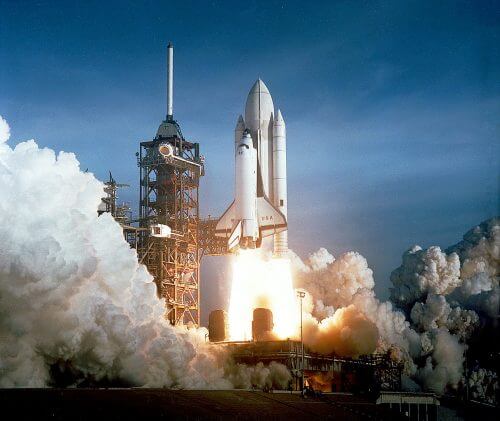
On a 54-and-a-half-hour mission, Young and his co-pilot Bob Crippen We examined the various characteristics of the space shuttle Columbia, and completed 133 different flight objectives. They performed, for the first time for a spacecraft returning from Earth orbit, a horizontal landing on a runway at Edwards Air Force Base in California.
In his sixth and final mission to space, STS-9, once again served as commander of the space shuttle Columbia, this time with five other crew members. The mission was the first in which the space laboratory was installed on board the shuttle.Spacelab", in which various experiments were carried out similar to those carried out today in the International Space Station. The team worked non-stop in 12-hour shifts, for 10 days.
Continue his service at the agency
After returning to Earth, Young was scheduled to make another space flight, his seventh, on the original mission to put the Hubble Space Telescope into orbit in 1986, but The Challenger disaster That year led to its postponement to 1990 and the change of the task force.
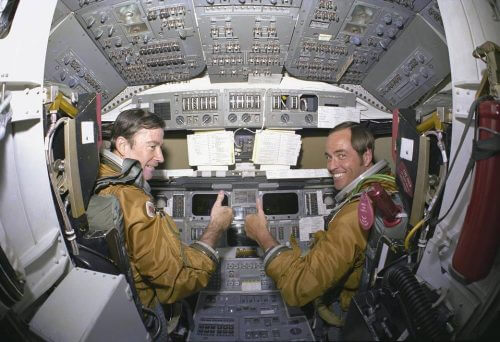
Young continued to work in a number of different management positions at the agency, as mentioned, until his retirement in 2004, after 42 years of service, the longest career span for an astronaut.
In an interview Speaking to the Houston Chronicle at the time, Young said that humans need to return to the moon and settle elsewhere in the solar system if they want to continue to survive: "It's inevitable that bad things will happen to us, like a comet or an asteroid, or [an eruption] on a volcano. Flying into space is a dangerous business, but simply staying on this planet is also a dangerous business."
See more on the subject on the science website:
- Eugene Cernan, the last man to walk on the moon, has died
- Apollo 16 - traveling with an all-terrain vehicle between geological formations
- Introduction to the Apollo Program - Part I / Part II'
- The Gemini program - the first time that people stayed and worked in space for a significant period of time
- Apollo 10 - last instrument test before the manned landings

3 תגובות
Naftali
A bad joke.
walked on the moon? More precisely, he walked in the Nevada desert
"Deceased" is only said of a Jewish person.